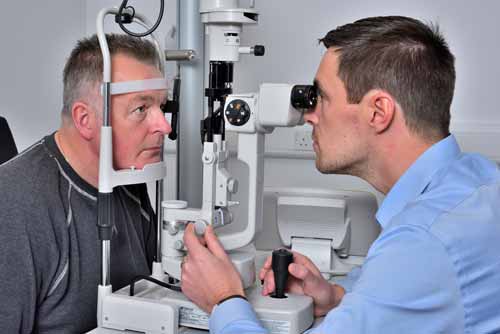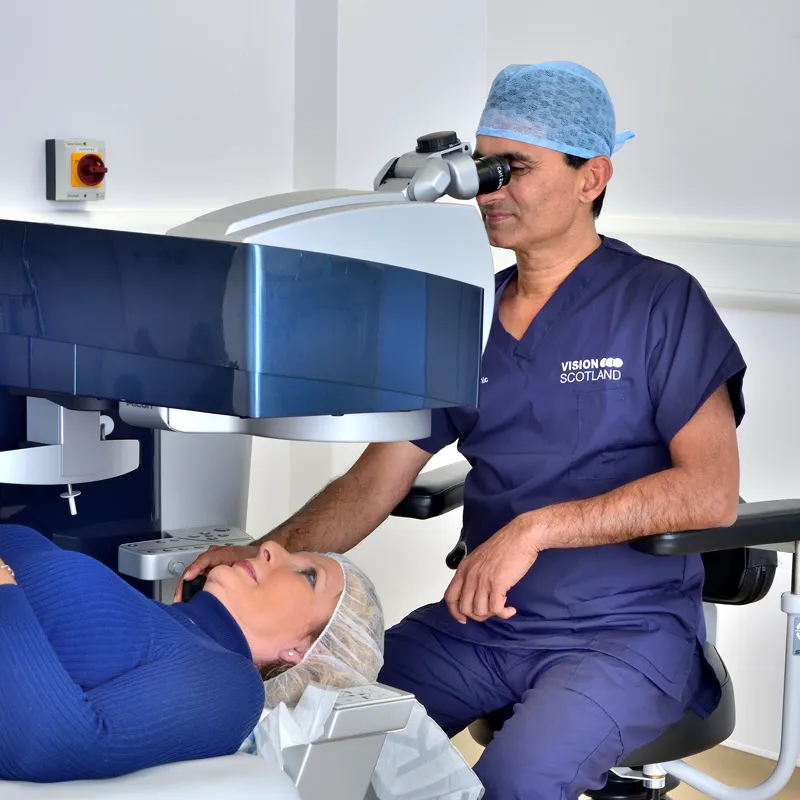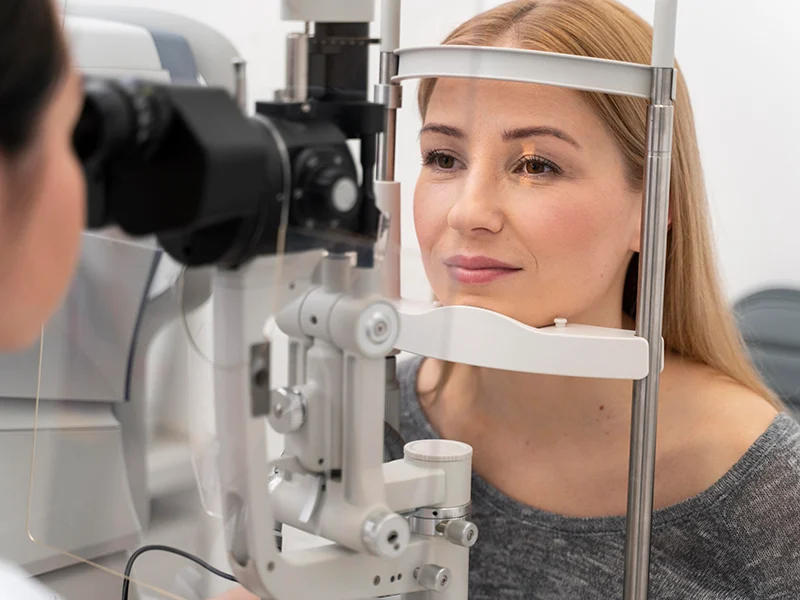Cataract surgery has evolved significantly over time. Older cataract surgery involved removing the entire lens in one go through a much larger incision in the eye and was therefore a much more invasive and risky procedure. Modern cataract surgery uses a process known as phacoemulsification which involves breaking up the lens into small fragments and removing the contents through a minute incision in the eye. The incision is so small that no stitch is required. The result is a much less invasive surgery and much faster healing time.
Phacoemulsification coupled with the use of modern antibiotics that are administered directly into the eye during the procedure, make the surgery very safe. Infection after cataract surgery is such a rare complication that it is difficult to know the true incidence but the European Society of Cataract and Refractive Surgeons (ESCRS) estimate it to be between one in 2000 and one in 5000. The risk of infection to both eyes following bilateral surgery is estimated to be one in a million, with only four cases having ever been published world wide(1).

Not only that but in every single instance of these four cases, patients should not have been treated for bilateral surgery owing to their increased risk of infection. Risk factors for infection include certain underlying eye conditions, health conditions and medications. Our highly experienced surgeons will only ever consider bilateral same day surgery after a full risk assessment. When a patient has both eyes treated on the same day, each eye is treated as a separate surgery with individual sterilization protocols and separate surgical instrument trays used. If for any reason the surgeon identifies a risk during the first procedure then the second procedure will be postponed and you will be asked to return for second eye surgery at a later date. Pleasingly, this is uncommon.
Historically patients would undergo cataract surgeries at separate visits but it is anticipated that in the near future, bilateral same day surgery will be the norm. Indeed it is already the norm in many countries around the world. The Royal College of Ophthalmologists fully support bilateral cataract surgery.
There are numerous benefits of having both eyes treated at once. The most obvious is convenience. Patients rely on friends/ family taking them to and from the hospital on the day of surgery and treating both eyes at the same time means one less visit. Some patients get very anxious in a hospital environment and whilst our team will give you the best care and try to put you at ease, some people prefer having to go through the experience only once. Recovery from surgery is faster when both eyes are treated simultaneously because the two eyes are working together immediately. This means that returning to work, driving, golfing or whatever else you like doing in your spare time can happen sooner. Additionally, the period of time spent using eye drops after surgery is reduced.
If you are deemed to be a suitable candidate for bilateral same day surgery then the decision rests with you. We will happily treat both eyes on the same day or if you prefer we will wait one to two weeks between surgeries. The most important thing is that you are comfortable with your decision. It is your choice.
- European society of cataract and refractive surgeons (ESCRS), https://www.escrs.org/eurotimes/a-rare-but-serious-risk
- Arshinoff S. Bilateral endophthalmitis after simultaneous bilateral cataract surgery. J Cataract Refract Surg. 2008;34:2006–8.




